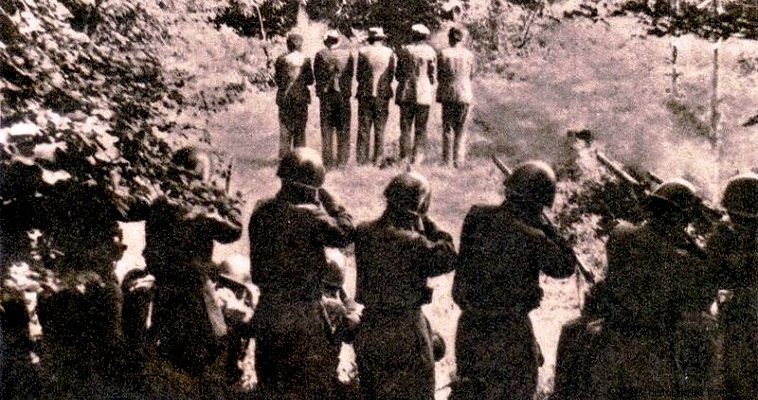
Domeniko Elassonas is a small village in Thessaly. But it is also one of the villages that became a holocaust during the triple foreign occupation in 1941-44. The only difference compared to other similar crimes is that this one was committed by "good" Italians.
In Greece, the opinion has prevailed, erroneously, that the Italians were the most "good" of the three conquerors (Germans, Italians, Bulgarians). And yet they were just as cruel criminals as their allies at the time.
Movement and crime
On February 16, 1943, ELAS guerrillas attacked a small section of Italian and Romanian "legionaries" . ELAS set up an ambush on the enemy phalanx at Mavritsa position, at a distance of 2 km from Domeniko. The insurgents attacked the Italian phalanx but those Italians who escaped returned to the village of Mesochori where additional forces were stationed. In the ambush, nine Italians were killed and one officer was wounded.
The administration of the 24th Infantry Division "Pinerolo" decided to take revenge. The obvious target was Domeniko. Indeed, the Italians approached the village and initially ordered the inhabitants to remain locked in their homes. The inhabitants obeyed as they had no part in the ambush and could not imagine what would follow.
Soon 40 Italian vehicles arrived in the village. The Italians together with their "legionary" collaborators led all the inhabitants to the square. A special role was played by the Romanian, generous, gifted mayor of the village, Nikos Hotos, who helped the Italians. In the square, the Italians singled out the women and children, except for the boys over 14 years old, and forcibly took them to the village of Amouri.
The men and boys over 14 remained in the already burning village. The Italians told them they would be taken to a camp in Larissa. Soon the Italians transferred men from the surrounding villages, Mesochori, Damasi, Amouri, to Domeniko. Then the phalanx of the future dead was led to Mesochori.
And this village was set on fire while 12 men of the village were already murdered. In the evening, as the phalanx had approached the Kavkaki area, by order of the commander of Pinerolo, General Benelli, under the supervision of Lieutenant Colonel Antonio di Paula, the Greeks were all murdered.
The victims were executed in sevens. The executions continued until the afternoon of February 17. 194 Greeks from Domeniko and others from the surrounding villages were executed. Only six escaped, one escaping being shot and another five hiding under the body of the corpses.
The priest of the village, father Dimitrios, who was trying to convince the Italians that the inhabitants of the village were not involved in the ambush, met a tragic death. But an Italian grabbed him and started tearing out his beard. He then set it on fire.
The first reaction to the crime came from Gendarmerie Major Nikolaos Bambalis, who on February 19, sent two reports to the International Red Cross. Babalis was immediately arrested by the Italians and sentenced to death. By sheer chance he survived.
According to the Italian historian Lidia Santarelli, the order to harden the attitude of the Italians towards the Greeks came from the Italian commander in Greece, General Carlo Zelozzo. It is worth noting that the Pinerolo Division, after the Italian capitulation in September 1943, joined the ELAS forces.
